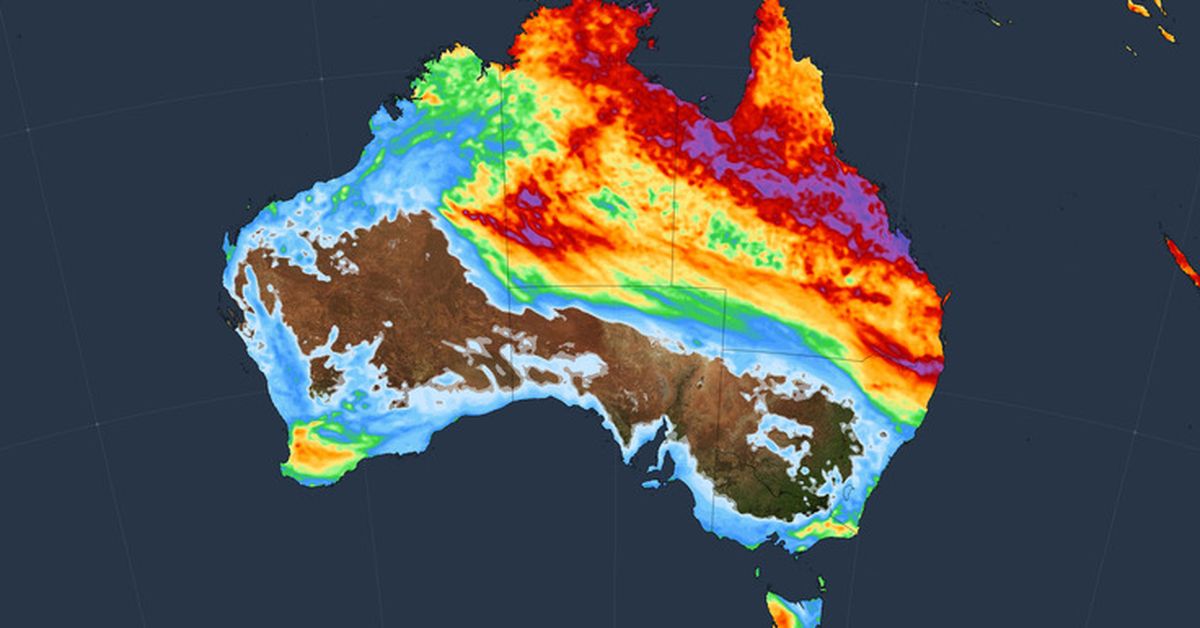Queensland Outback Faces Further Flooding Amidst Heavy Rain
Editor’s Note: Devastating rainfall continues to lash Queensland's outback, prompting renewed flood warnings and raising concerns about the long-term impacts on communities and infrastructure.
Why This Matters
Queensland's outback, a region known for its arid climate, is experiencing unprecedented levels of rainfall. This unexpected deluge is causing widespread flooding, impacting critical infrastructure, disrupting supply chains, and posing significant risks to both human lives and the delicate ecosystem. Understanding the severity and implications of this event is crucial for effective disaster response and future preparedness. This article examines the current situation, analyses the key contributing factors, and explores the potential long-term consequences. Keywords: Queensland floods, outback flooding, heavy rain, Australia floods, disaster relief, climate change, infrastructure damage, environmental impact.
Key Takeaways
| Point | Detail |
|---|---|
| Extent of Flooding | Widespread inundation affecting multiple towns and rural communities. |
| Infrastructure Damage | Roads, bridges, and communication lines severely impacted. |
| Humanitarian Concerns | Evacuations underway; concerns about access to essential supplies and services. |
| Environmental Impact | Damage to fragile ecosystems and potential for long-term ecological disruption. |
| Long-Term Recovery | Significant resources and time required for rebuilding and community recovery. |
Queensland Outback Faces Devastating Floods
The Queensland outback, typically characterized by its dry and harsh landscape, is currently battling a catastrophic flooding event fueled by relentless heavy rain. This unprecedented deluge is wreaking havoc on communities, infrastructure, and the environment, demanding immediate attention and highlighting the vulnerability of even the most remote regions to extreme weather events. The current situation marks a significant escalation of an already challenging weather pattern, forcing many to evacuate their homes and raising concerns about the long-term impacts on the region's economy and ecosystem.
Key Aspects of the Current Flooding Crisis
- Unprecedented Rainfall: The sheer volume of rainfall significantly exceeds historical averages, overwhelming drainage systems and causing rapid rises in water levels.
- Isolated Communities: The remoteness of affected areas is hampering rescue efforts and the delivery of essential aid.
- Infrastructure Damage: Roads, bridges, and communication networks have been severely damaged, isolating communities and disrupting supply chains.
- Environmental Consequences: The flooding poses a significant threat to the region's unique flora and fauna, with potential long-term ecological consequences.
Detailed Analysis of the Impacts
The devastating impact extends beyond immediate damage. The disruption of supply chains is causing shortages of essential goods, while the damage to infrastructure will require significant investment to repair. The long-term economic consequences for affected communities could be substantial. Furthermore, the environmental repercussions are likely to be profound, with potential for habitat loss and disruption to delicate ecosystems. Comparisons to previous flood events in the region show this event surpasses many in terms of both scale and intensity.
The Role of Climate Change
The increasing frequency and intensity of extreme weather events raise critical questions about the role of climate change. While a definitive link to this specific event requires detailed analysis, the broader trend of intensified rainfall patterns aligns with climate change predictions. Further research is essential to fully understand the contribution of climate change to this crisis.
Practical Tips for Staying Safe During Outback Flooding
Introduction: Protecting yourself and your loved ones during flooding is paramount. These tips provide guidance for staying safe amidst this crisis.
Tips:
- Stay Informed: Monitor weather reports and official warnings closely.
- Evacuate When Ordered: Comply immediately with evacuation orders from authorities.
- Prepare an Emergency Kit: Stockpile essential supplies like water, food, and medications.
- Protect Your Property: Secure valuables and take steps to protect your home from flooding.
- Avoid Floodwaters: Never attempt to drive or walk through floodwaters.
- Stay High Ground: If flooding occurs, seek higher ground immediately.
- Help Others: If you are able, assist your neighbors and vulnerable members of your community.
- Post-Flood Safety: Be aware of potential hazards like contaminated water and structural damage.
Summary: These preparedness steps can significantly improve your chances of surviving and recovering from a flood.
Transition: The severity of the current situation emphasizes the importance of long-term preparedness and community resilience.
People Also Ask (NLP-Friendly Answers)
Q1: What is causing the Queensland outback flooding?
A: Prolonged and exceptionally heavy rainfall is overwhelming the region's drainage systems, leading to widespread flooding.
Q2: How severe is the flooding?
A: The flooding is widespread and severe, affecting multiple communities and causing significant infrastructure damage.
Q3: What assistance is available?
A: State and federal governments are providing emergency relief, including evacuation support and financial assistance. Contact your local authorities for details.
Q4: What are the long-term impacts?
A: Long-term impacts include significant infrastructure repair costs, economic disruption, and potential environmental damage.
Q5: How can I help?
A: You can donate to reputable disaster relief organizations or volunteer your time to support affected communities.
Summary (Zusammenfassung)
The ongoing floods in Queensland's outback represent a significant crisis, demanding immediate action and raising concerns about the long-term impacts on communities and the environment. The sheer scale of the flooding highlights the vulnerability of even remote regions to extreme weather events.
Closing Message (Schlussbotschaft)
The resilience of the Queensland outback communities is being tested, but their spirit remains strong. Let's support those affected and learn from this event to strengthen our preparedness for future challenges. What steps can we take collectively to mitigate the impact of future extreme weather events?
Call to Action (CTA)
Stay informed about the situation and consider donating to support relief efforts. Share this article to raise awareness and promote community support. [Link to relevant donation page]

